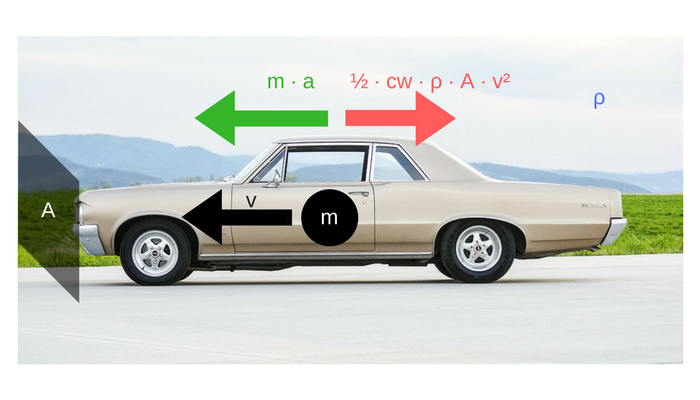Air resistance

On a free highway, a car accelerates uniformly with constant acceleration . Taking into account the air resistance, the equation of motion for the velocity reads
with the mass and cross-sectional area of the car and the density of the air. The dimensionless factor describes the drag coefficient, that depend on the actual shape of the car.
After a few minutes of acceleration the car reaches its top speed of . What is the value of the drag coefficient ?
Bonus question: What is the actual solution for the differential equation?
This section requires Javascript.
You are seeing this because something didn't load right. We suggest you, (a) try
refreshing the page, (b) enabling javascript if it is disabled on your browser and,
finally, (c)
loading the
non-javascript version of this page
. We're sorry about the hassle.
In the limiting case t → ∞ the velocity approches a constant value v ∞ , so that the total accelation d t d v becomes zero. The equation of motion can be simplified to
0 = m a − 2 1 c w ρ A v ∞ 2 ⇒ c w = ρ A v ∞ 2 2 m a = 1 . 2 5 ⋅ 2 ⋅ 1 6 0 0 2 ⋅ 8 0 0 ⋅ 1 = 0 . 4